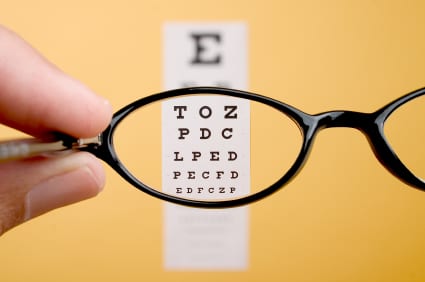
Myopia, or nearsightedness, affects more than a quarter of the U.S. population.
Doing a lot of “close-up work,” including reading, may bring on the condition or make it worse (as a society’s literacy rates rise, so does the rate of myopia), but there is a considerable genetic component too.
Myopia usually develops because the eyeball grows to be too long. In animal models of myopia, changes in eye tissue associated with reduced levels of a growth factor called TGF-β1 have been shown to be responsible for this elongation.
Two recent studies tried to connect TGF-β1 to myopia in humans by looking at genetic variations in the gene that encodes the protein, but the results were conflicting.
The authors of a new study, published online today in the Archives of Ophthalmology, sought to clarify the role of the TGF-β1 gene in human myopia by analyzing several genetic variations in 300 nearsighted Chinese people and 300 with normal vision. The nearsighted people had a particularly severe form of myopia known as high myopia (usually defined as -6.00 diopters or worse, but this study used -8.00 diopters).
The researchers found that one SNP in the TGF-β1 gene in particular was associated with high myopia. Each A at decreased the odds of developing the condition by 0.67 times.
The authors say that their results solidify the TGF-β1 gene as a player in myopia, but the question of how affects the gene or the risk for the condition remains unanswered. Analysis of the TGF-β1 gene sequence showed that the different versions of might affect the amount of protein made from the gene, but further laboratory experiments will be needed to explore this possibility.
Alternatively, may be just a signpost pointing the way to a nearby genetic variant that truly affects the risk of myopia.



